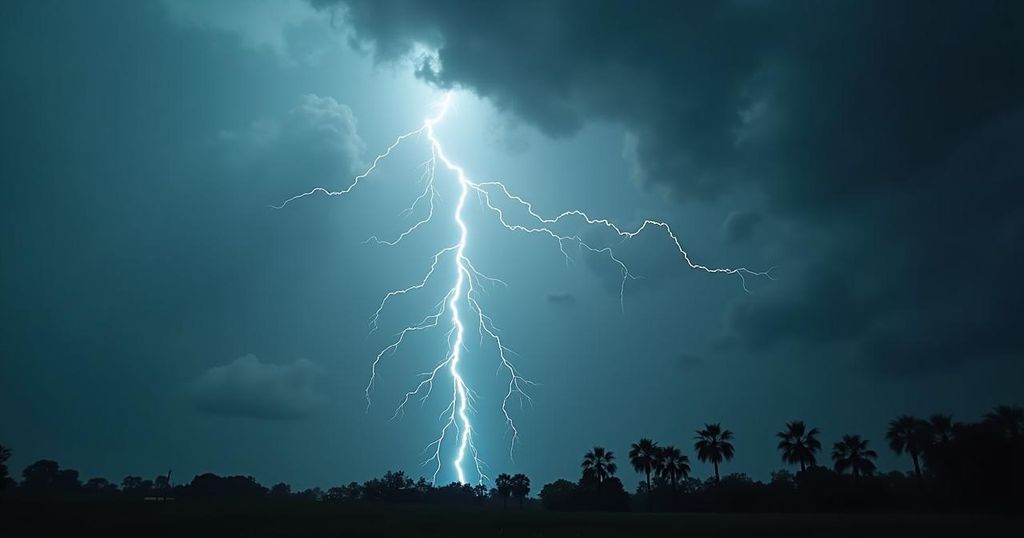Florida has declared a state of emergency as Storm Milton approaches, with warnings of rapid intensification and life-threatening hazards. The storm follows the devastation of Storm Helene, which recently impacted the region, resulting in numerous fatalities. Heavy rain and flooding are anticipated, further complicating ongoing recovery efforts.
Florida is bracing for the impending impact of Storm Milton, which is anticipated to strengthen as it approaches the already affected Gulf Coast region. In light of this situation, a state of emergency has been declared across several counties in Florida following warnings from forecasters about the tropical storm’s potential escalation into a life-threatening hurricane. The National Hurricane Center has reported that Storm Milton, currently located off the Mexican coast, is expected to gain strength rapidly, posing significant risks to the state’s west coast. The threat of Storm Milton arises just ten days after the devastation caused by Storm Helene, which has been described as the deadliest storm to hit the mainland since Hurricane Katrina in 2005. Storm Helene resulted in at least 225 fatalities, with many individuals still unaccounted for. In Florida alone, the storm claimed the lives of at least 14 individuals. As a precautionary measure, Governor Ron DeSantis has issued emergency alerts for 35 counties, detailing the mobilization of efforts to restore power and perform road clearance ahead of Milton’s landfall. As of 02:00 EST on Sunday, Storm Milton was recorded with maximum sustained wind speeds of 60 mph (95 km/h). The Hurricane Center noted, “Milton is moving slowly,” and emphasized, “there is increasing confidence that a powerful hurricane with life-threatening hazards will be affecting portions of the Florida west coast around the middle of this week.” Heavy rainfall is projected for the area, beginning Sunday and continuing into next week, with expected totals between 5 to 8 inches across the Florida Peninsula and the Keys. Certain regions may receive upwards of 12 inches, raising concerns over flash flooding and river flooding. The impact of Storm Milton coincides with ongoing cleanup efforts from Storm Helene, which could take years to complete, according to government assessments. While North Carolina suffered the highest number of casualties, the fallout from Helene also affected Florida and surrounding states including Georgia, South Carolina, Tennessee, and Virginia. Hundreds of roads remain obstructed, hindering humanitarian support to severely impacted communities affected by Helene’s destruction, which included extensive structural damage and widespread power outages.
In recent weeks, Florida has faced severe weather challenges following the devastating effects of Storm Helene. With Storm Milton approaching, the region is now under heightened alert, experiencing a state of emergency as the National Hurricane Center warns of significant storm intensity and life-threatening hazards. The dual impact of two storms within a short timeframe places considerable strain on emergency services and recovery efforts.
The imminent arrival of Storm Milton poses grave risks to Florida’s west coast, particularly in light of the recent destruction wrought by Storm Helene. The state is taking proactive measures through emergency declarations and preparedness activities to mitigate potential losses. With a forecast of substantial rainfall and the possibility of escalating storm conditions, the need for vigilance and community support remains critical as the region prepares for potentially devastating impacts.
Original Source: www.bbc.com






